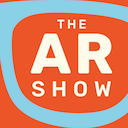Michael Hoffman (Object Theory) on 18 Use Cases Where Smartglasses Are Profoundly Better (Part 1)
Find it on iTunes | Google Play | Spotify | Stitcher
The Guest
Michael Hoffman is the founding partner at Object Theory, where he and his team work with enterprises to leverage AR and VR technologies, often in combination with IoT and AI/Machine Learning.
Prior to Object Theory, Michael was a Principal Engineering Lead at Microsoft on the Hololens team, where he developed a number of enterprise applications. Earlier in his career, Michael worked in software engineering roles at Google, Nike, and several startups.
His exposure at Microsoft, at Object Theory, and really throughout his career, has given Michael a comprehensive perspective on how smartglasses can add value. His direct experiences draws primarily from the enterprise, but many of these use cases also apply to consumers.
The Conversation
Michael has identified 18 core use cases in total, and has excellent first-hand examples of each. I opted to split this conversation into two parts.
In this first part, Michael and I talk about his experience at Microsoft on the Hololens team and his passion for the future of spatial computing.
We then get into several use cases he’s identified based on his experience building solutions for NASA, AutoDesk, Trimble, Microsoft, Stryker, and many others. Here we get into use cases around guiding, learning, and educating.
Michael also shares his belief that the field of view is NOT a limiting factor of today’s smartglasses...in most cases.
The Request
If you like what you hear, please subscribe, rate, and review the podcast from your favorite player.
Links From The Episode
- Slides: Mixed Reality Use Cases and Challenges
- Tool: BrainShark’s video coaching assessments and AI-powered analysis
- Book: Snow Crash by Neal Stephenson
- Book: Ready Player One by Ernest Cline

